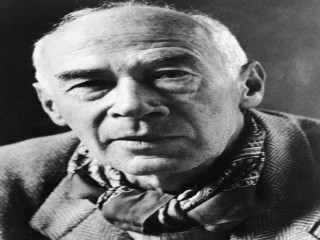
Henry Miller biography
Date of birth : 1891-12-26
Date of death : 1980-06-07
Birthplace : Brooklyn, New York, U.S.
Nationality : American
Category : Arts and Entertainment
Last modified : 2011-06-14
Credited as : Novelist, and painter, erotic literature
Born December 26, 1891 in Brooklyn, New York City, Henry Miller grew up in Brooklyn and briefly attended the City College of New York. From 1909 to 1924 he worked at various jobs, including employment with a cement company, assisting his father at a tailor shop, and sorting mail for the Post Office. While in the messenger department of Western Union, he started a novel. Throughout this period he had a troubled personal life and had two unsuccessful marriages (throughout his life he married five women and divorced all of them). Determined to become a writer, Miller went to Paris, where, impoverished, he remained for nearly a decade. In 1934 he composed Tropic of Cancer (United States ed., 1961), a loosely constructed autobiographical novel concerning the emotional desolation of his first years in Paris. Notable for its graphic realism and Rabelaisian gusto, it won praise from T. S. Eliot and Ezra Pound. Many were outraged by the sexual passages, however, and the author had to go to court to lift a ban on his work. The controversy caused it to become a best-seller, although critics continued to debate its literary merits. Black Spring (1936; United States ed., 1963) and Tropic of Capricorn (1939; United States ed., 1962) are similar in style and feeling, drawing from the experiences of Miller's boyhood in Brooklyn and formative years as an expatriate.
In 1939 Miller visited his friend the British novelist Lawrence Durrell in Greece. The Colossus of Maroussi (1941), depicting his adventures with the natives of the Greek islands, and one of the finest modern travel books, resulted. Returning to the United States in 1940, Miller settled permanently on the Big Sur coast of California. His acute and often hilarious criticisms of America are recorded in The Air-conditioned Nightmare (1945) and Remember to Remember (1947). The Time of the Assassins (1956), a provocative study of the French poet Arthur Rimbaud, states eloquently Miller's artistic and philosophic credo. Big Sur and the Oranges of Hieronymus Bosch (1958) deals with Miller's California friends.
Miller's major fiction of this period was the massive trilogy The Rosy Crucifixion, including Sexus (1949), Plexus (1953), and Nexus (1960). These retell his earlier erotic daydreams but lack the earlier violence of language. Miller's correspondence with Durrell was published in 1962 and his letters to Anaïs Nin in 1965. His The World of Lawrence: A Passionate Appreciation (1980) is about the life and career of his literary compatriot, D. H. Lawrence. Opus Pistorum (1984) is a novel reputedly written by Miller in the early 1940s when he needed money; most critics consider the work to be pure pornography and some question whether Miller was the actual author.
In his later years Miller was admired mainly for his role as prophet and visionary. Denouncing the empty materialism of modern existence, he called for a new religion of body and spirit based upon the ideas of Friedrich Nietzsche, Walt Whitman, and D. H. Lawrence. Miller's novels, despite sordid material and obscene language, at their best are intensely lyrical and spiritually affirmative. With his freedom of language and subject he paved the way for such Beat Generation writers as Jack Kerouac and Allen Ginsberg. Miller lived his final years in seclusion pursuing his lifelong interest of watercolor painting. He died on June 7, 1980 in Pacific Palisades, California.


















